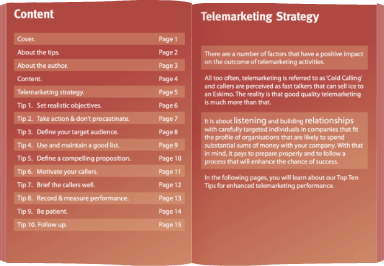Pretty much everyone knows that the cost of acquiring a new customer is four to five times higher than retaining an existing one. It’s fair to say, therefore, that nurturing your existing client base is a powerful way to enhance your sales and your bottom-line profit.
It’s also probable that existing customers will be more likely to buy from you on an ongoing basis, and they’re more likely to welcome new product launches. They provide upsell and cross-sell opportunities that are usually not present during the prospecting cycle.
Chasing New Business
Yet with more than 20 years experience in the business development world, I can reliably say that very few of our clients really focus on nurturing customers. They may feel that their sales team does an effective job at managing client relationships. But, the problem is that sales personnel are busy. And, incoming leads and fresh opportunities demand immediate attention. What’s more, customers that shout loudest usually take the lion’s share of internal resources.
Therefore, things can slip through the net.
Equally, few companies can survive without new business. So, it’s understandable that significant time is allocated to sourcing new leads and generating new business. That’s especially true when you see a significant degree of customer attrition or where much of your revenue comes from one-off purchases. .
As a consequence, it’s possible that a disproportionate amount of energy goes into chasing new business as opposed to cultivating opportunities with customers at hand. That doesn’t mean that businesses ignore their best customers, rather they miss opportunities with those on the fringes.
Customers on the Fringes
Many organisations can point at a relatively large pool of clients over time. This includes big customers, ones that order periodically, and ones that may have last ordered some time ago. The database often also includes customers that may have lapsed, and certainly ones that are inevitably in the process of speaking to competitors.
Things change fast in business. Unless concerted efforts are made to keep in regular contact, it’s impossible to know when fresh requirements pop up. It’s also hard to keep on top of client changes both in terms of personnel and in terms of their specific business needs. Companies only have limited resources.
What’s the best route to Growth?
Mostly, our client work consists of cold outreach to a new audience of target prospects. You might wonder what the problem is with that since there are very few businesses that genuinely don’t need new business alongside client retention.
One option should not negate the other. However, prospecting is harder than nurturing. And a lot of work needs to go into effective lead generation when it comes to unearthing fresh prospects. So, whilst outreach for new business may need to be on your agenda, it also makes sense to consider alternatives. This is where nurturing is essential.
Change is Constant
Buyers come and go. Many companies have large databases and it’s impossible to keep track of the comings and goings in every client business. Things change. Organisations grow and contract. As a consequence, it’s essential to be well placed when opportunities arise, but that’s hard to do when it’s 18 months since you were last in touch, and that contact was just via an email or a newsletter. In addition, the larger your customer database, the harder the task.
It’s natural to focus on large accounts. Therefore, some potentially valuable, but smaller, customers can feel neglected and slip through the net. Many may be at risk of deserting to competitors who tempt them with offers. And, relationships often die with personnel changes. What’s more, it’s an impossible task to track when buyers change.
Unfortunately, those situations lead to a weakening of the relationship and that leads to attrition. Without reasonably frequent contact, it’s probable you’ll miss opportunities to do more business. Peer to peer interaction is what’s needed, and that means a call or a visit. So what’s the solution?
The Answer Lies in Client Data
The best approach is to take a good look at the data sitting in your systems to ensure that you’ve got accurate contact details. Whilst you don’t need to write a book on every company, profiling by sector, number of employees, size, past spend, types of products or services purchased, and other key parameters will help you assess their potential, and then you can work out a segmented approach.
You need to construct a plan for how to approach and nurture these targets. If you’ve got limited internal resources the temptation might be to send an email again. If these are low value customers and you can establish that there really isn’t more potential, it might be the best way to do it. Yet the most sensible option is often a call to qualify them, to check that the decision-makers are still there, to ascertain their needs, and to develop the relationship.
If you don’t have the staff to do the exercise in a reasonable timeframe, maybe consider an outsourced solution to take the task in hand and to provide the output seamlessly and swiftly. Ultimately, any cost associated with nurturing exercises should be set against the opportunity cost of not doing it. That’s to say setting the cost of losing clients to competitors against the revenue that can be generated by timely customer care calls. In the end analysis, if you believe there may be big potential lurking in your unloved customer database, take time to run a customer nurturing campaign. You will definitely see the benefits.






